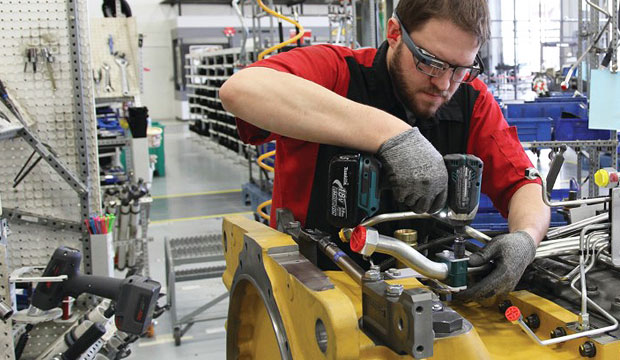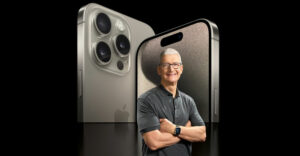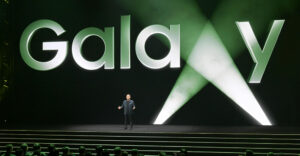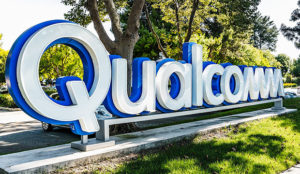Google’s augmented reality goggles were a flop several years ago — when intrepid explorers wore the devices in restaurants and bars, sparking reactions ranging from disapproval to outright violence — but they have become very welcome in the workplace. Their success in a host of business settings led The Team at X on Tuesday to announce an expansion of its Glass Enterprise Edition program.
The latest version of Glass looks like a pair of safety glasses, but it’s really a small, lightweight wearable computer with a transparent display that can bring information into the wearer’s line of sight.
What the Glass team has found since introducing the original version in 2014 is that workers in many fields — such as manufacturing, logistics, field services and healthcare — have discovered the advantages of accessing information while both hands are busy.
“That’s why we’ve spent the last two years working closely with a network of more than 30 expert partners to build customized software and business solutions for Glass for people in these fields,” noted Glass Project Lead Jay Kothari.

Since Glass’ introduction, The Team at X (a subsidiary of Google parent Alphabet), has improved the design and hardware, making it lighter and more comfortable to wear for long periods of time. The team also increased the power and battery life for the unit.
More than 50 businesses now are using Glass to improve worker productivity, Kothari pointed out.
“Based on the positive feedback we’ve received from these customers in a special program we’ve been running for the past two years, we’re now making Glass Enterprise Edition available to more businesses through our network of partners,” he said.
‘Unmitigated Disaster’
Unlike the consumer market, where Glass failed to gain traction, the enterprise has been open to the new technology.
“Workers look at it as a tool,” said Brian Ballard, CEO of Upskill, a Glass partner.
“They see it as beneficial,” he told TechNewsWorld. “It empowers them, helps them perform their jobs better, and there’s universal excitement for it.”
That’s a far cry from Glass’ reputation in the consumer market.
“The first-generation consumer Glass was an unmitigated disaster on many fronts, so it won’t be too hard to top it with the new commercial version,” observed Patrick Moorhead, principal analyst at Moor Insights and Strategy.
In the consumer realm, Glass quickly became socially unacceptable, recalled Ian Hughes, an Internet of Things analyst with 451 Research.
“The device caused suspicion and discomfort to others not wearing it,” he told TechNewsWorld, “but in the workplace, where safety goggles and hardhats might be worn, those devices makes more sense.”
The Right Place
There were three problems with the consumer version of Glass, explained Ross Rubin, principal analyst at Reticle Research. It was conspicuous, it was pricey, and it lacked applications.
“Selling to the enterprise addresses all those issues,” Rubin told TechNewsWorld.
“Its price can be justified because it can save on costs, [and] enterprises also have developers who can create content for Glass,” he said.
“As for conspicuousness, people will be using it for limited applications and not in their daily lives,” Rubin noted.
For consumers, Glass was a luxury item, like a smartwatch, said Eric Abbruzzese, a senior analyst at ABI Research.
“In the enterprise, it can be seen to pay for itself in every role that we’ve seen,” he told TechNewsWorld. “It’s hard to find something that can make that kind of impact.”
Forgiving Market
The enterprise market can be more forgiving than the consumer market.
“Everything doesn’t have to be perfect to extract value,” Moorhead told TechNewsWorld.
“The glasses can be larger, they don’t have to last all day, and don’t have to be the easiest thing to use to derive business value,” he said.
“Look at the way computers started in business,” Moorhead continued. “They were big, bulky, ugly and expensive before consumer adoption took off.”
Because the enterprise has more control over its workers’ tools, it can avoid the privacy problems connected to the consumer version of Glass.
“It was always predicted that Glass was going to be useful in certain industrial contexts,” said Timothy Toohey, an attorney with Greenberg Glusker.
“The problem is when you take it out of those contexts, it has facial recognition issues and surreptitious recording issues that violate the privacy law of some states,” he told TechNewsWorld.
“Unless an enterprise disables those functions, it will have the same problems,” Toohey added.
Classic Mistake
Google made a classic mistake when it introduced Glass.
“I’m always recommending to companies to go after industrial applications first, but they never want to because they all have big dollar signs in their eyes,” said Jim McGregor, principal analyst at Tirias Research.
“They all want that billion-unit consumer pot of gold,” he told TechNewsWorld.
“That’s exactly what Google did instead of first going after the embedded and industrial market,” McGregor said.
“The reason it makes more sense to go to that market first is it’s in these applications that you see an immediate return on investment,” he added.
“It doesn’t matter if it costs $1,300, $1,500 or $2,000, because you can justify the value of it in terms of improved productivity, fewer defects and enhanced capabilities,” McGregor explained.
“Plus, when you put it in these environments first, it helps build interest in it for consumers going forward,” he said, “for the time when prices come down and the technology becomes more flexible for consumer applications.”























































